|
|
Believed to be the old No 5 Furnace, at Skinningrove, with one ladle full the second one is being filled. Using Cleveland ironstone; up to one and a half tons of slag were produced for every ton of Iron.
Image (from a Glass Plate Negative) courtesy Dave Mcgill.
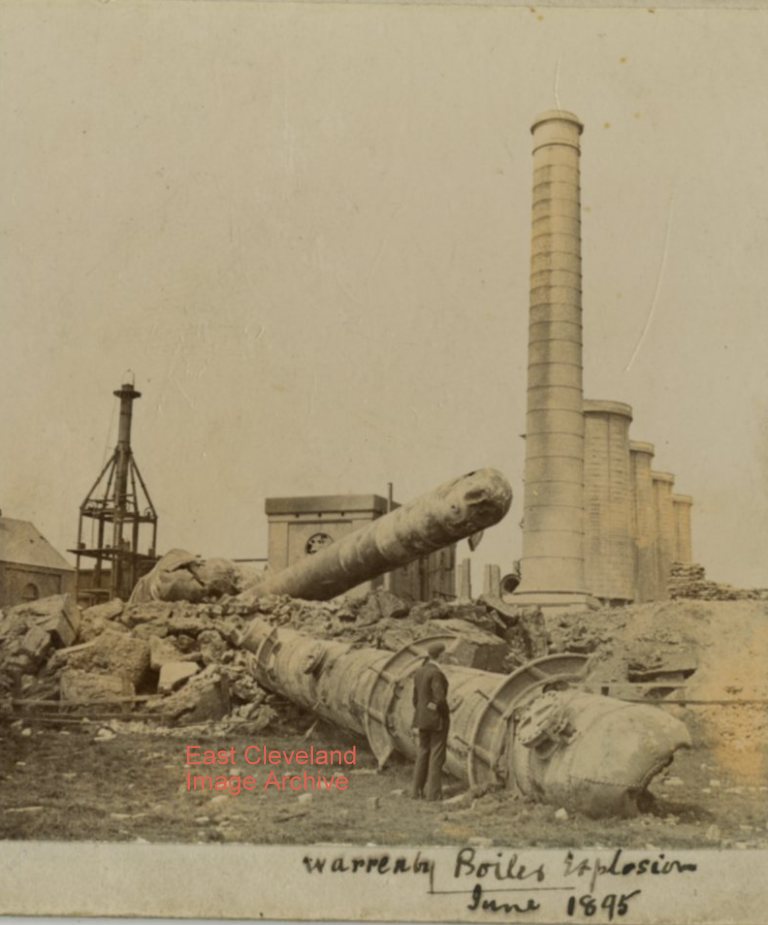
Apparently Warrenby Steel works (sadly no longer in existence) which was pre-Dorman Long, British Steel, Tata and SSI (for our older viewers) suffered a major boiler explosion in 1895; the photograph (which came as part of a double image) postcard of the event still bears the handwritten inscription we have retained. It must have been a big one! Judging by the damaged remains shown. We have since been told that much information is held on the Communigate website, which includes the headline: ”North Eastern Daily Gazette: Saturday 15th June 1895. AWFUL EXPLOSION NEAR REDCAR . THIRTEEN BOILERS BLOWN TO PIECES. FRIGHTFUL WRECKAGE. TEN MEN KILLED AND MANY INJURED. MIRACULOUS ESCAPES. LARGE IRONWORKS DESTROYED . 200 MEN THROWN IDLE.” There is an expansive section on this disaster contained on the Communigate site
Jackie Wray inquired: “Hi can anyone let me know how to find out more about this. I think my great great grandfather died in this explosion and would love to find out more.”
John Knaggs has advised in response to Jackie Wray’s inquiry: ”I have just been researching this as William Rowbottom left the following entry in his ‘Diary of a Cleveland Miner’ he kept between 1873 and 1925 and I am currently indexing the transcript and adding other information from various sources.
I have a list of 9 young men who were sadly fatally injured, but other sources mention 10 or 11 and the same seriously injured. More could be gleaned from newspapers of the time possibly held in Redcar Reference Library or The National Newspaper Archive online.
This is the information I have to date on your Great Grand father: WRAY Robert born 1864 Coatham, Yorkshire; General Labourer, 6 Decoy Street, Warrenby,Yorkshire 1891; Pigeon Street 1895, wife Mary Ann (WILSON) born 1863 Driffield, YorKshire; Robert died aged 32; leaving 4 children, “encouraged by his wife to work another man’s shift as a Slagger to help the family finances”.”
Image courtesy of Geoff Patton and thanks to Peter Turvey and John Knaggs for the updates.
Skinningrove Ironworks, used two types of Slag Bogies. This photograph shows an end tipping Ladle. In later years they used side tipping Ladles. The chain used for emptying the Ladle is prominent, it runs under the Ladle, and when taken to the tip was attached to the engine, the slag ladle bogie scotched, the engine pulled away tipping the Ladle. This photo also gives a good view of the “tunnel” running along the Furnaces. The short headroom above the rail tracks, shows why Skinningrove had locomotives with cut down cabs and chimneys.
Image courtesy of Dave Mcgill.
Photograph taken from the top of the new no 5 furnace, during construction around 1950. The twin conveyor belts from the coke tippler and ore crusher over the bunkers are still uncovered. On the right smoke is seen issuing from the “monkey” valves on top of the gas offtakes of No 3 furnace (nearest the camera) and No 1 blast furnaces. The twin rows of Furnace Cottages, and St Helens church are seen in the centre of the photograph.
Image (from a Glass Plate Negative) courtesy of Dave Mcgill.
Skinningrove Ironworks. At the date of this photograph, the tap hole was opened by hammer and crowbar; a tough and dangerous task. Although “wind” or (blast) was reduced in pressure, the molten iron could burst out of the taphole with some force. The clothing of the furnacemen did not give any protection. Safety didn’t figure in the good old days. Above the men the large diameter pipe (Bustle Main) carried the hot blast, a small pipe (Gooseneck) leads down to the “tuyere” by which the hot “blast” entered the Furnace.
Image (from a glass plate negative) courtesy Dave Mcgill.
George House – Tyne Tees Televison Reporter – interviewing ‘A North Skelton Miner’ on 17th January 1964; at he end of his last shift. Peter Armstrong tells us: ”I think this miner being interviewed is my grandfather William Henry Armstrong (“Boy” Armstrong). ”
Image courtesy of George Pearson and many thanks to Peter Armstrong for that update.
Last pay day at North Skelton Mine 17th January 1964. Being paid is George Swan with walking stick hooked in his pocket. George lost a leg down the mine, he was given the job of handing out the explosives to the shotfirers from the underground magazine. Behind George is believed to be John Whiteley.
Image courtesy of George Pearson; additional information courtesy of Jeff Templeman.
North Skelton; Miners queue for their last pay at the ”Bob hole,” It will be noticed they are wearing ordinary clothes , no issue of special gear in those days, some still carrying their carbide lamps, and in their pockets bottles and containers which held water or cold tea, ”No Canteen” underground in the good old days!
However Bill Danby tells us: ”My brother-in-law, Frank Holmes, who was the last Deputy out of North Skelton Ironstone Mine in 1964 states that this is unlikely to be a photograph of the last day at the mine. One of the miners is carrying a carbide lamp and another a candle, whereas, Frank says, North Skelton mine was one of the first to start using electric lamps. Or the picture was a set-up for the occasion. Frank worked most of his life down the mines, first at Lingdale, where in the 1953 disaster he helped carry out the lads burnt in the explosion of methane. On the closure of that mine he transferred to North Skelton. After retiring he volunteered to help at the Skinningrove Mining Museum and put the roof up in the tunnel where they demonstrate what life down there was like.” Bill also suggests ”There is much information on North Skelton Mine from its opening in 1872 on my website ’ The History of Skelton’”
Image courtesy of George Pearson; many thanks to Bill Danby for that update.
North Skelton Mine; the last pay packets, being paid at the accounts office window called the ”bob hole”, on the 17th January 1964. Can any one help with identification of the Miners? Leo Howard tells us: ”The first man in the queue wearing beret. His name was Willi Wnek. He was Polish and was the fitter.” Alan Etherington comments: “Of little consequnce, a Bob Hole was the little door in the side of a hen house that was raised each morning to let the hens out and closed at night when they’d all gone back in and this would keep out foxes.” Whilst Hilary Fullilove asks: “My father, Henryk Doktor, also Polish, worked at the Lumpsey pit until the 1950s. I would very much like to find out more about his time there. Any references to mining records etc. would be most gratefully received.”
Image courtesy of George Pearson, thanks to Leo Howard and Alan Etherington for the updates; can anyone assist with Hilary Fullilove’s enquiry?
Photograph taken at the back of North Skelton mine fitting shop. 1954.
Left to right: Tony Calvert (apprentice electrician), Colin Wheatley (apprentice fitter), Tiny Dunston (apprentice fitter), Alan Richardson (apprentice fitter), Jeff Templeman (apprentice fitter).
Image courtesy of Jeff Templeman.
|
|
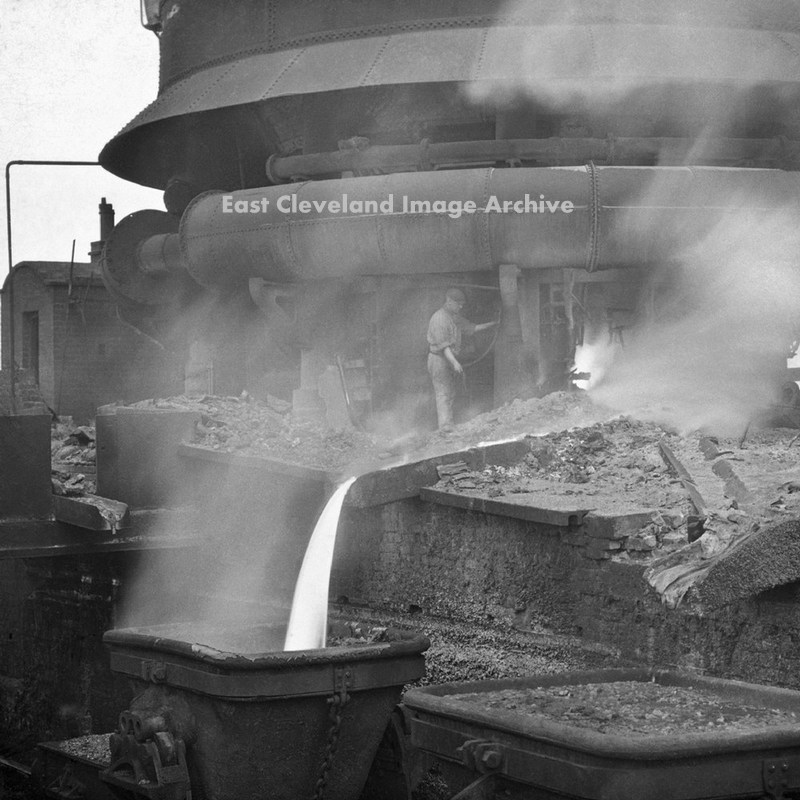

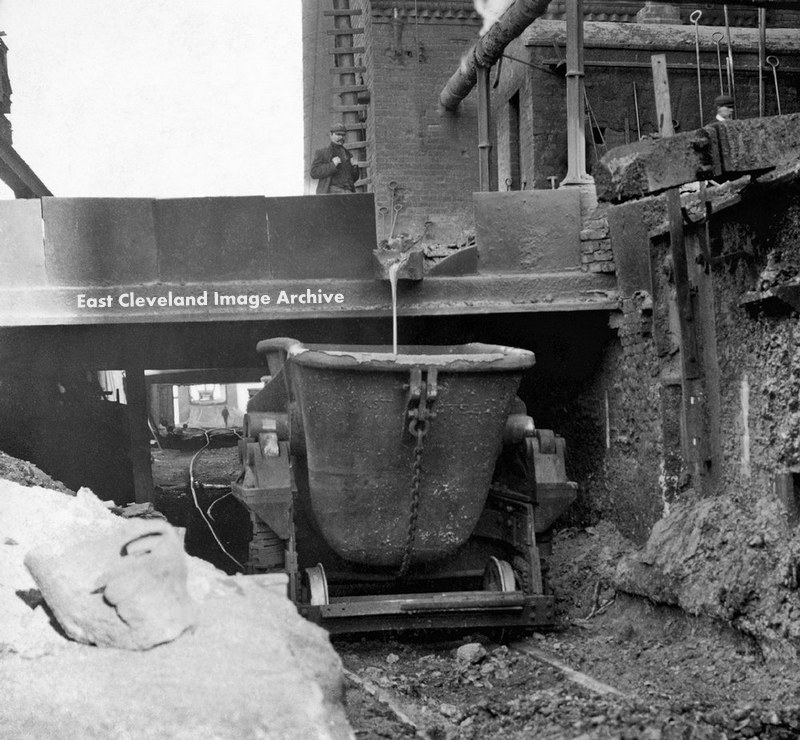
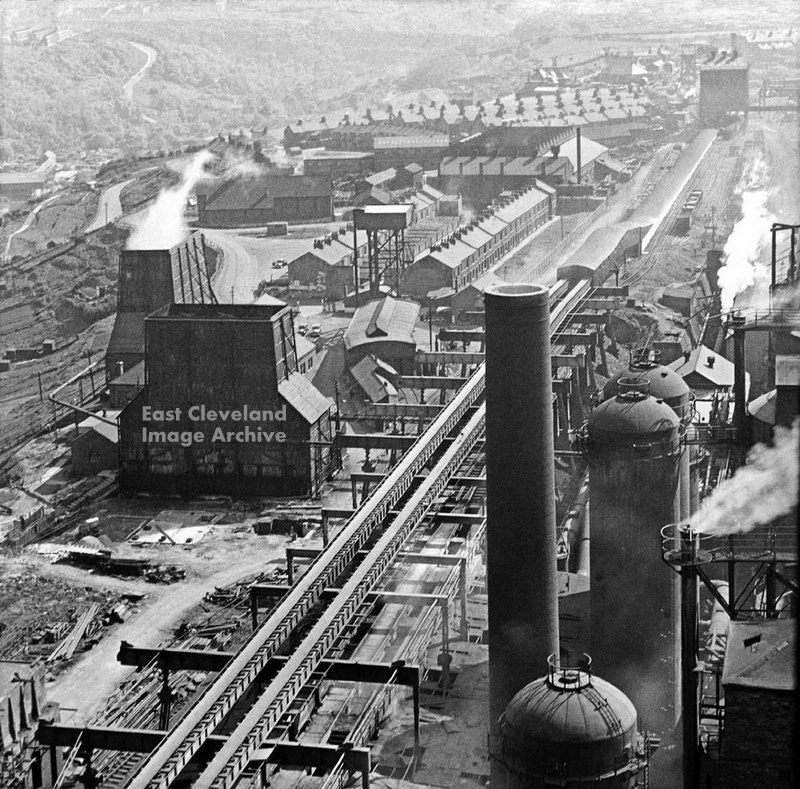
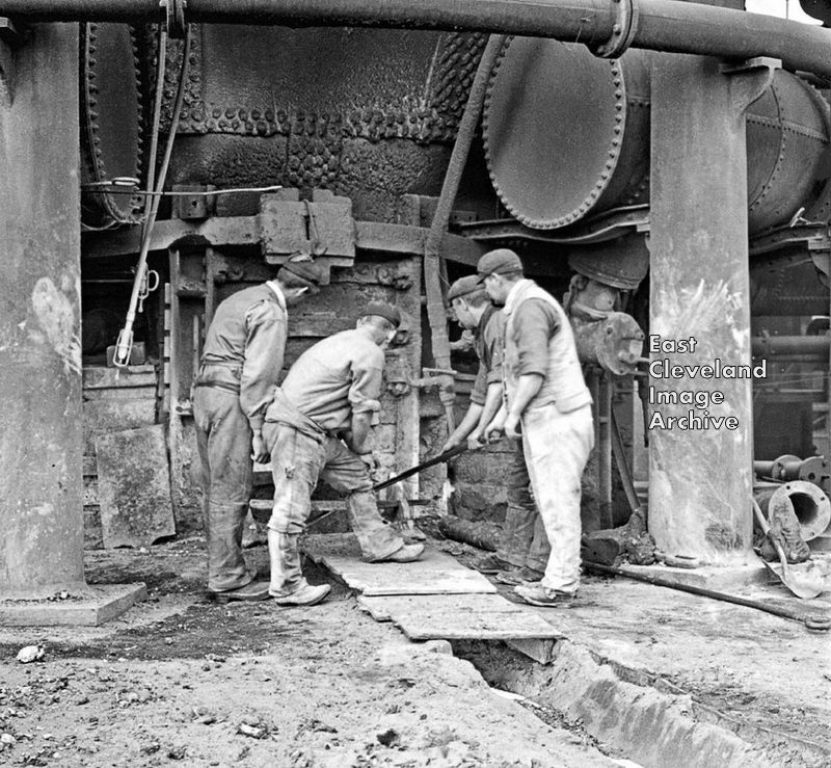
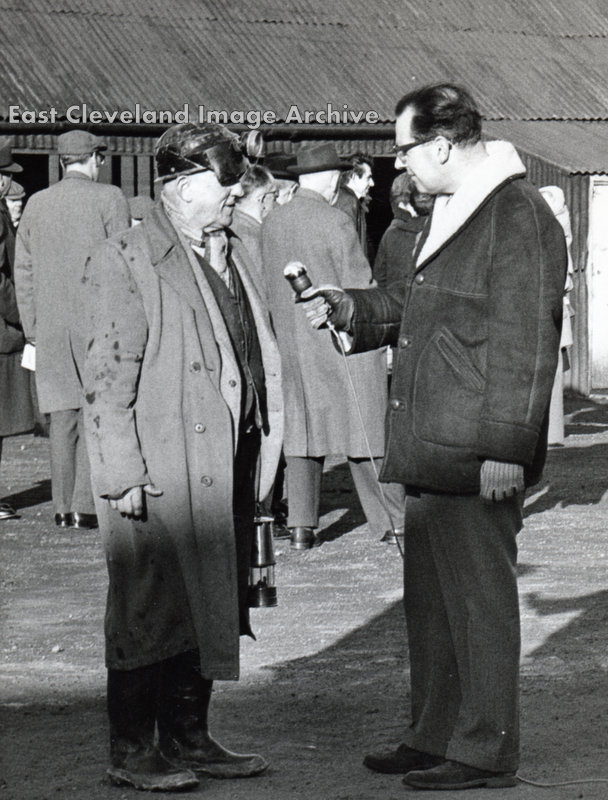
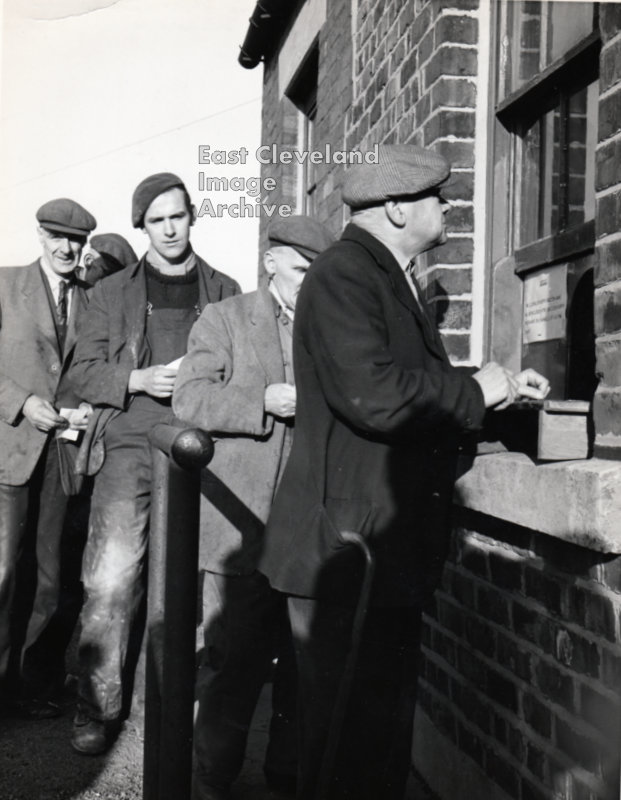
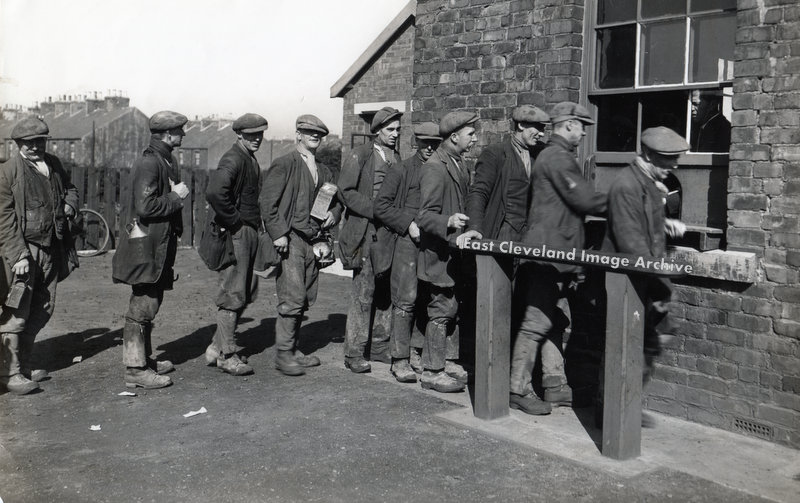
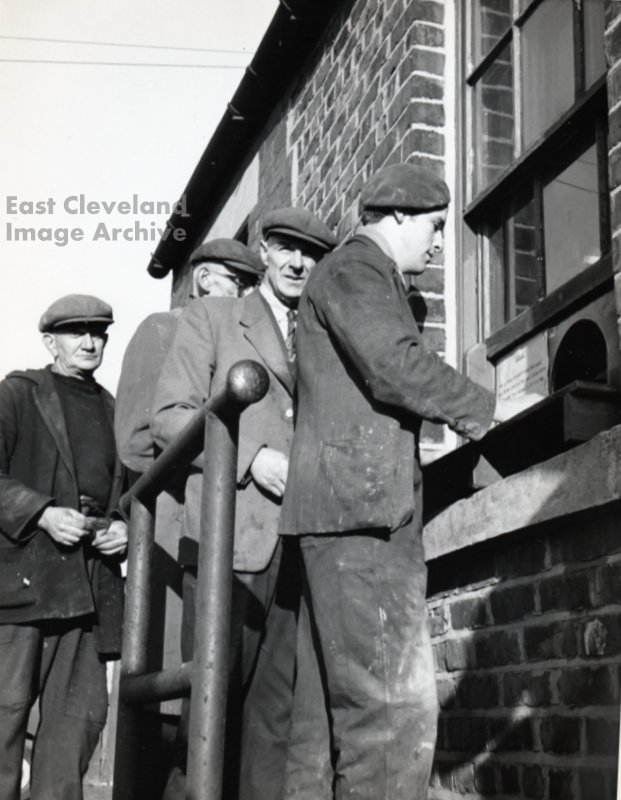
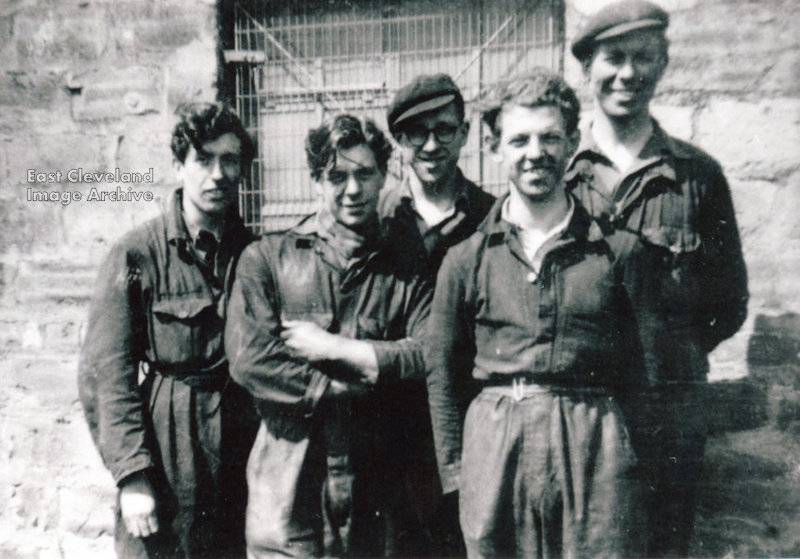
Recent Comments